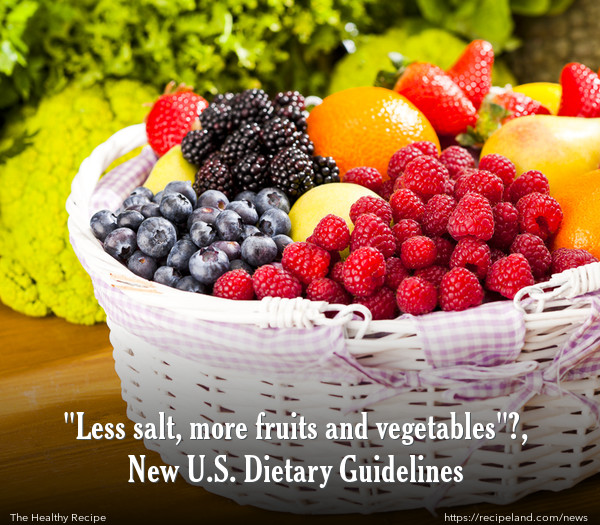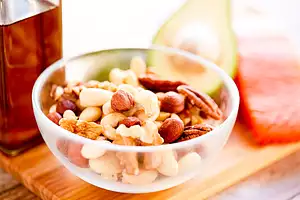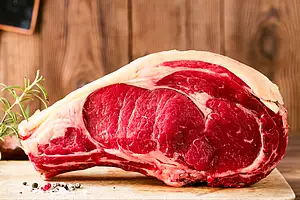Everyone 51 and older, all African Americans and people with high blood pressure, diabetes or kidney disease —about half of the American population — should reduce sodium in their diets by more than half, according to the revised guidelines, issued every five years by the federal government.
Salt has been highlighted in the nation's battle against obesity and poor eating habits as the latest enemy, with new federal dietary guidelines calling on Americans to dramatically reduce sodium intake, eat plenty of fruits and vegetables and drink water instead of sugary beverages.
The new recommendations, stronger in tone than in 2005, are aimed at awakening the public to the links between unhealthy eating and such chronic killers as diabetes, cancer, stroke and heart disease. A majority of American adults and a third of children are overweight or obese.
As an easy reference, the report recommended Americans to "make half your plate fruits and vegetables," switch to low-fat or skim milk and drink a bottle of water instead of sugary drinks.
This time, officials emphasized how expensive the poor eating habits are: three-fourths of every healthcare dollar is spent on treating chronic diseases related to diet, imposing financial burdens on household budgets, business and government.
Past guidance has been "opaque" and there hasn't been enough focus on "how this impacts us as a nation," said Health and Human Services Secretary Kathleen Sebelius, whose department co-wrote the guidelines with the Agriculture Department.
The advice on sodium intake was seriously and heavily pointed out.
"You have to look at a label or a [food] company website," said Margo Wootan, nutrition policy director for the nonprofit Center for Science in the Public Interest, who praised the straightforward guidelines. The report may be the first since 1980 to state the obvious: "Eat less," she said.
Americans daily sodium intake is about 3,400 milligrams on average, way more than the 2,300 milligrams recommended as a daily upper level.
The guidelines suggest that the half of the Americans in higher-risk groups should reduce about 1,500 milligrams daily sodium intake.
But that is difficult to calculate, even for willing participant, because about 90% of sodium comes from packaged food or restaurant, not the visible salt.
Nutritionist Marion Nestle said the guidelines were a substantial improvement over earlier versions but fall short by failing to name specific foods and products to be avoided, in deference to powerful food lobbies who don't want their products passed over by consumers.
Nestle said the guidelines used the acronym "SoFAS," which stands for solid fats and added sugars.
"Why don't they just say what they mean: eat less meat, sodas, snack foods?" said Nestle, who teaches at New York University. "The most useful thing they could do is name names."










Comments
Until you find a solution to American beliefs about taking without regard to anything or anyone you will never have any impact on their eating habits